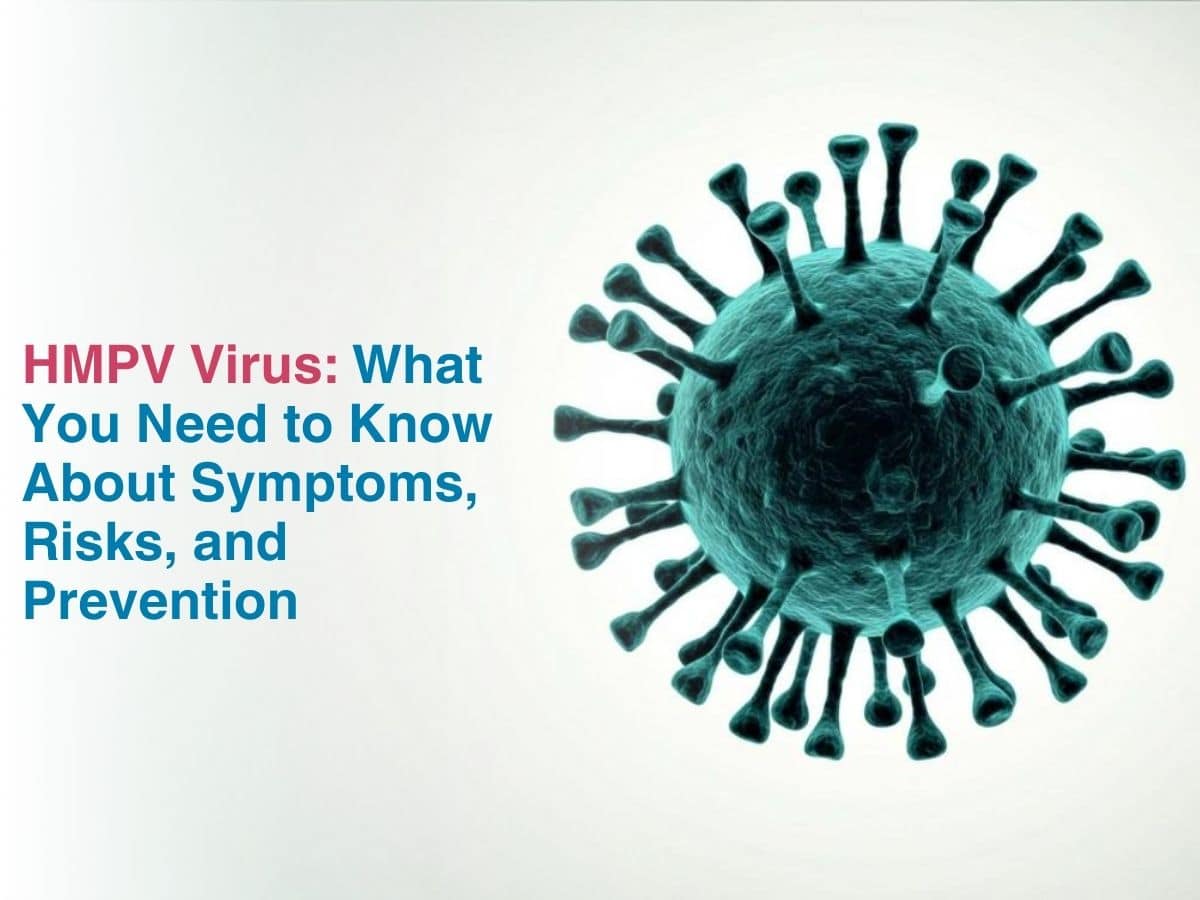
HMPV Virus: What You Need to Know About Symptoms, Risks, and Prevention

The NEWS is at it again- HMPV cases detected in Bengaluru in children, cases in J&K, China and what not and we are already worrying ourselves sick about another possible ‘pandemic’ in the loose. It is definitely NOT a virus from China alone. Breathe in! Relax! The Human Metapneumovirus (HMPV) is NOT a new entity nor are our doctors clueless about how it can be treated. But, it still makes total sense to know what the virus can do to us commoners and how we can stay safe.
What Is HMPV And How Does It Spread?
The Human Metapneumovirus is an infectious entity that normally seems to affect individuals with lowered or immature immunity- so children and old folk are common victims in this regard. It is closely related to another infectious virus called RSV (Respiratory syncytial virus), ones that cause measles and mumps in children, from the pneumoviridae family. and can cause opportunistic infections if all conditions are met. It’s been here for many decades, though it has only been researched in detail very recently. It spreads just like the flu virus- when you touch contaminated surfaces, when you inhale droplets after an infected person has coughed or sneezed or when you touch your eyes, nose or mouth afterwards – giving the virus a free pass into your system. It will then take about 3-6 days before symptoms begin to show. This is called the incubation period for the virus.
The good news is that the symptoms are pretty low key and won’t cause any major distress, except in very rare cases. Let’s however learn more about the common symptoms of HMPV infection, so you can isolate and rest for a bit-
- Cold
- Cough
- Sore throat
- An annoyingly runny nose
- You may also have to deal with diarrhoea and vomiting, but let’s hope you don’t.
Now, do you understand why it is so easy for someone to mistake these symptoms for the flu?
But, for some older and more immuno-compromised people, the symptoms may be severe and could range from wheezing, breathlessness, extreme fatigue and even progress to full-blown pneumonia, which may require hospitalisation. It is a very seasonally occurring virus- so beware flu season. But the catch is- there is no vaccine for HMPV. Diagnosis is pretty easy too- with rapid antigen tests or swabs, which can get your quick results.
Treatment Options For HMPV Infections-
Since the symptoms are pretty mild, they will go away on their own. But, you could take medication to feel better. Some treatment options include the following-
- You can talk to your doctor and take paracetamol or related drugs to reduce fever, cold and pain.
- If you have a very runny nose, then you could use drops for the same.
- If you have asthma or wheeze a lot, then keep an inhaler handy at all times.
- You may also be prescribed steroids if necessary.
Now, let us look at some risk factors for HMPV complications–
- You may wheeze or feel really breathless
- It may progress to bronchitis or pneumonia
- It can cause both upper and lower respiratory system illnesses, so be careful.
Conclusion
The general verdict is that this virus is not something that can cause a large-scale pandemic. But it is still infectious, so let us follow all the rules that were the norm during COVID-19. As we like to say- prevention is better than cure and if you take good precautions, you may walk away infection-free or even with just the mildest symptoms. There is no vaccine for HMPV, so don’t unnecessarily place yourself at risk by going to crowded places or by being in contact with someone sick. If you do have these symptoms yourself, don’t panic and talk to your doctor or just rest. You will mostly be fine in less than a week.
Frequently Asked Questions
What is the HMPV virus, and how does it affect humans?
How does the HMPV virus spread from person to person?
Is there a vaccine available for the HMPV virus?
How is HMPV diagnosed by healthcare professionals?
Can the HMPV virus cause long-term respiratory issues?

Dr. V. Laxman Babu
MBBS, MD (Pulmonary Medicine)
Sr. Consultant Pulmonology, Interventions & Sleep Medicine






